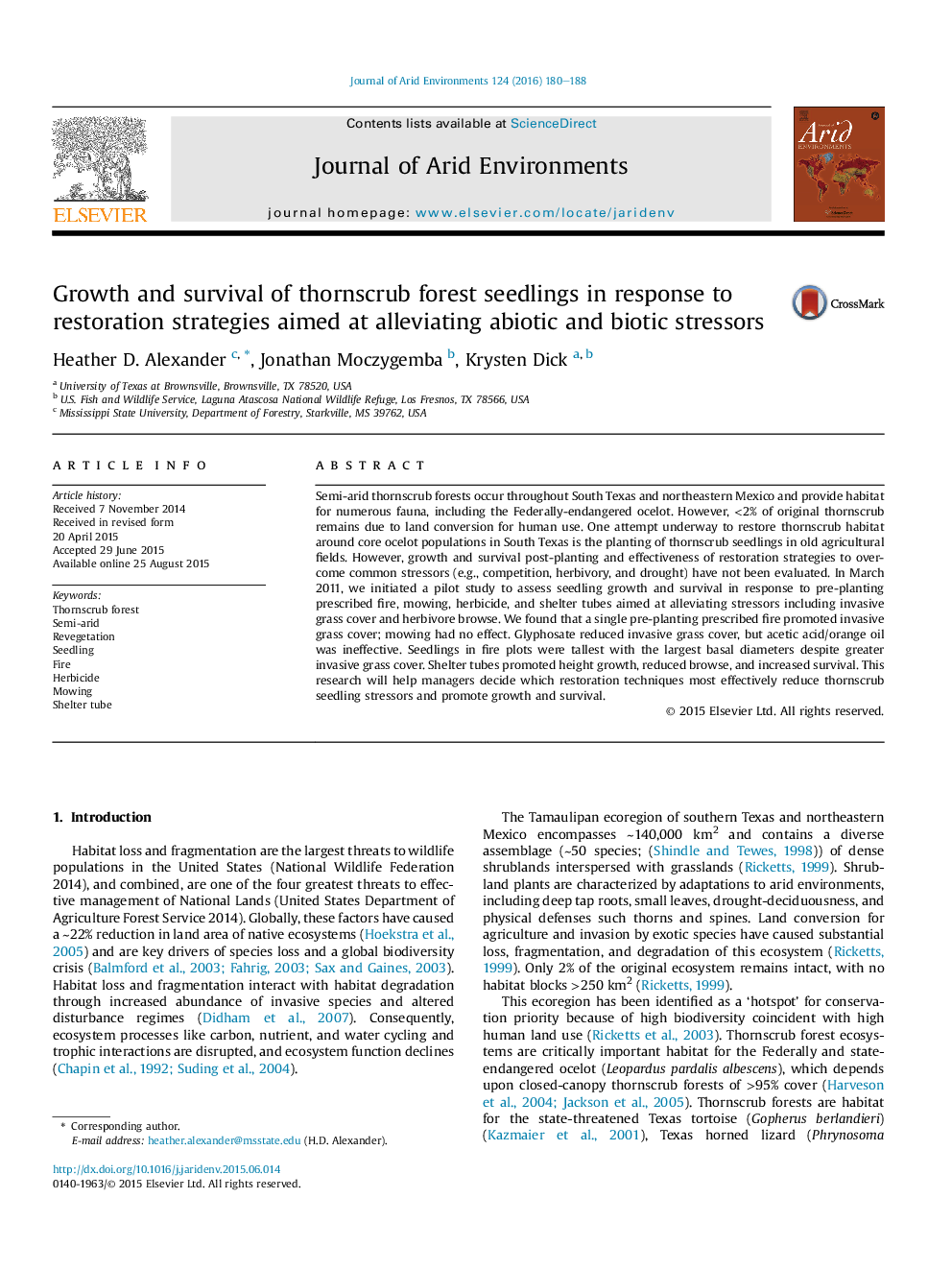| Article ID | Journal | Published Year | Pages | File Type |
|---|---|---|---|---|
| 6303375 | Journal of Arid Environments | 2016 | 9 Pages |
Abstract
Semi-arid thornscrub forests occur throughout South Texas and northeastern Mexico and provide habitat for numerous fauna, including the Federally-endangered ocelot. However, <2% of original thornscrub remains due to land conversion for human use. One attempt underway to restore thornscrub habitat around core ocelot populations in South Texas is the planting of thornscrub seedlings in old agricultural fields. However, growth and survival post-planting and effectiveness of restoration strategies to overcome common stressors (e.g., competition, herbivory, and drought) have not been evaluated. In March 2011, we initiated a pilot study to assess seedling growth and survival in response to pre-planting prescribed fire, mowing, herbicide, and shelter tubes aimed at alleviating stressors including invasive grass cover and herbivore browse. We found that a single pre-planting prescribed fire promoted invasive grass cover; mowing had no effect. Glyphosate reduced invasive grass cover, but acetic acid/orange oil was ineffective. Seedlings in fire plots were tallest with the largest basal diameters despite greater invasive grass cover. Shelter tubes promoted height growth, reduced browse, and increased survival. This research will help managers decide which restoration techniques most effectively reduce thornscrub seedling stressors and promote growth and survival.
Related Topics
Physical Sciences and Engineering
Earth and Planetary Sciences
Earth-Surface Processes
Authors
Heather D. Alexander, Jonathan Moczygemba, Krysten Dick,
